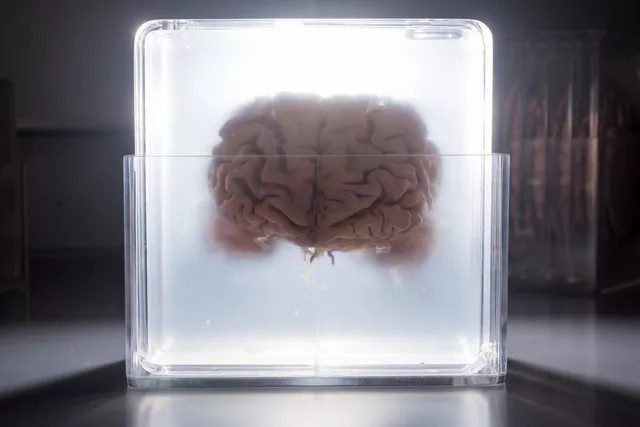Will this technology be a groundbreaking advancement in the scientific community, or could it lead to unforeseen consequences?
Throughout history, humanity has always yearned to surpass the limitations imposed by nature, whether it be enduring pain, hardship, illness, or even resisting death and fate. Fortunately, a remarkable technological achievement of our era is bringing humanity closer to that dream. Essentially, science is gradually charting an evolutionary pathway for humankind that transcends natural physical constraints, embodying characteristics more extraordinary than ever before.
Perhaps the most noteworthy idea is the process of transforming a person’s consciousness into digital data and “uploading” it to a vast advanced computer system. This means that the world as we know it could be filled with virtual experiences and the ability to exist beyond time (as long as no one forgets to save a backup data copy or accidentally turns off the system).

However, this project faces numerous challenges and obstacles on the path to success. Besides the seemingly impossible conditions for humans to achieve this in the near future, many fundamental factors exist that hinder the advancement of this research.
Regarding brain digitization technology, hardcore fans of science fiction are likely familiar with it. Ray Kurzweil, the Director of Engineering at Google, is one of the pioneering figures leading the charge to develop this concept as quickly as possible, with projections aiming for completion by 2045.
Most recently, economist Robin Hanson provided a detailed analysis of the potential societal consequences if this vision becomes a reality. He also mentioned a scenario where the world is operated solely by soul-less replicas of human minds, running on a virtual reality simulation with server systems as large as a city.
Nevertheless, there have been concepts and hypotheses suggesting that we might already be living in a world akin to that depicted in the film series The Matrix. Elon Musk has echoed this sentiment, suggesting that the probability we are NOT living in a computer simulation is only… one in a billion. Of course, this is merely his perspective supporting an idea that philosophers have debated for centuries: that our current reality is merely a relative illusion.
The Matrix Context
Despite this, there remain significant considerations concerning neural digitization technology. First, we must understand that the human brain is composed of trillions of connections among 86 billion neurons. To create a perfect replica of the brain, a computer system must fully simulate each connection—something our current technology and capabilities do not permit. With the current pace of technological advancement, humanity may reach this achievement in a few decades, but only concerning the parts of the brain that have ceased functioning and are isolated.
Beyond the Molecular Threshold
The network for accurately simulating connections in the brain has yet to be realized, making it hard to understand the origins and mechanisms of this system. Specifically, we need to comprehend the number and manner in which neurons connect at each intersection, of course, at the molecular scale. However, humanity has yet to fully grasp these intricate concepts, let alone determine what threshold is sufficient to provide and maintain brain function. Regardless, even if the answers are simple or complex, current computer technology is insufficient to carry the entire “burden” of this.
This leads to a profound new threshold of understanding. The ability to simulate certain operational aspects of the brain does not imply that the nervous system or human consciousness can be digitized and uploaded to a computer system. No existing machinery allows for a detailed molecular-level simulation of a brain. Therefore, that vision can only become reality when we successfully distill the mechanisms for processing data and logic, naturally at the molecular threshold.

Furthermore, to provide the clearest insights into how a hybrid human-machine platform operates, we do not need to focus too closely on the fluctuations and voltages of current or electrons. The design of semiconductor switches and the binary digits of 0 and 1 are sufficient to establish and control the network. However, a brain cannot be designed or created; it develops and evolves over time, so there is no reason to hope for applying digitization logic to the brain’s operations.
A Crazy Idea
Of course, no one can tax dreams, even if brain digitization is a fanciful, endless pursuit. Everyone will eventually come to cherish life and fear the moment of departure from this world. Thus, it is natural to experience such inherent emotional heights.
However, from the perspective of applying the previously mentioned consciousness digitization technology, this indeed serves as evidence of a complete shift in humanity’s thoughts and concepts regarding technology in general. This form of “transforming humanity” uses technology as a means to grant and realize human desires and wishes—which has always been the role and significance of science.
In summary, applying brain digitization can be viewed as a hypothesis—a foundational premise for possible future scenarios. But perhaps this is not the best starting point for the future of humanity, especially since we have yet to fully anticipate the profound aspects and consequences related to it.


















































